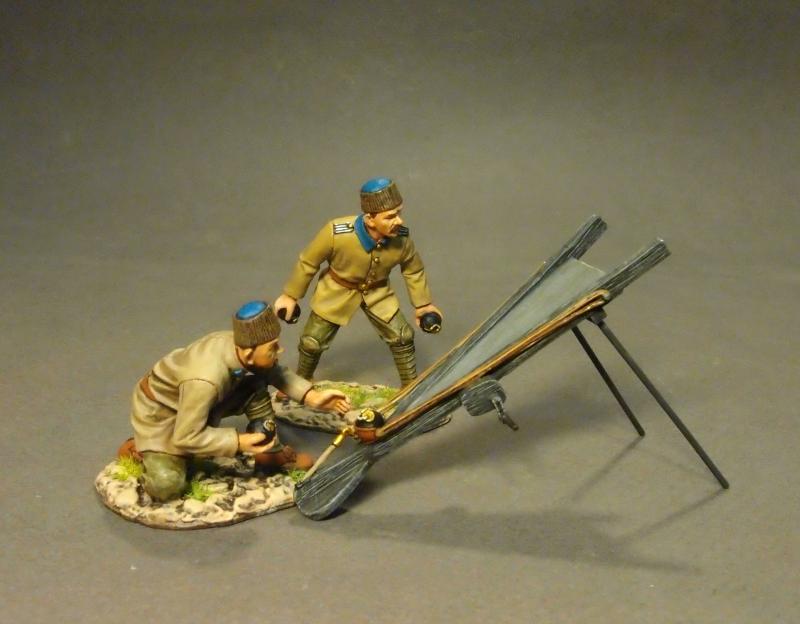Ottoman Engineers with Grenade Catapult, The Gallipoli Campaign, 1915, The Great War, 1914-1918—three pieces
$88.00
Item Number: GLT-08
Ottoman Engineers with Grenade Catapult, The Gallipoli Campaign, 1915, The Great War, 1914-1918—three pieces
With World War I stalled on the Western Front by 1915, the Allied Powers were debating going on the offensive in another region of the conflict, rather than continuing with attacks in Belgium and France. Early that year, Russia’s Grand Duke Nicholas appealed to Britain for aid in confronting a Turkish invasion in the Caucasus (The Ottoman Empire had entered World War I on the side of the Central Powers, Germany and Austria-Hungary, by November 1914.) In response, the Allies decided to launch a naval expedition to seize the Dardanelles Straits, a narrow passage connecting the Aegean Sea to the Sea of Marmara in northwestern Turkey. If successful, capture of the straits would allow the Allies to link up with the Russians in the Black Sea, where they could work together to knock Turkey out of the war.
The Gallipoli Campaign of 1915-16, also known as the Battle of Gallipoli or the Dardanelles Campaign, was an unsuccessful attempt by the Allied Powers to control the sea route from Europe to Russia during World War I. The campaign began with a failed naval attack by British and French ships on the Dardanelles Straits in February-March 1915 and continued with a major land invasion of the Gallipoli Peninsula on April 25, involving British and French troops as well as divisions of the Australian and New Zealand Army Corps (ANZAC). Lack of sufficient intelligence and knowledge of the terrain, along with a fierce Turkish resistance, hampered the success of the invasion. By mid-October, Allied forces had suffered heavy casualties and had made little headway from their initial landing sites. Evacuation began in December 1915, and was completed early the following January.
The Turkish made “Ball” grenade was used extensively throughout the Gallipoli campaign. This was the standard type of grenade used by the Turkish Army at Gallipoli during the First World War. The matchhead was struck on an abrasive igniter carried by each bomber, which lit the five-second fuze. Initially, ten-second fuzes were used, but these sometimes allowed the British and Australian troops to return the bomb to the Turkish trenches.”
These were employed by a specific trained unit of soldiers, usually the Pioneers/Engineering companies that existed as a separate branch under the pre-war establishment.
There are photographs showing Turkish grenade soldiers (engineers) using the British-designed Leach Trench Catapult (sometimes called a Leach-Gamage Catapult). These had an effective range of 200yds.
Over 150 were made in 1915, and sold by the Gamages department store in Central London.
Copies of the Leach Catapult were also made locally by the Royal Engineers during the Gallipoli Campaign.
